Comprehensive Guide to Active Filters
2024-09-19
2315
Catalog

Figure 1: Active Filter Diagram
Active Filter
Active filters play a role in modern electronic circuits, using components like operational amplifiers to perform highly accurate signal filtering. Unlike passive filters, which depend only on resistors, capacitors, and inductors, active filters add components that actively adjust features like frequency response, amplitude, and phase. One of the strengths of active filters is their ability to dynamically modify signals. Passive filters, on the other hand, are limited by their fixed components and cannot be adjusted once set. Active filters, however, use operational amplifiers to continuously fine-tune signal characteristics. Operators can easily adjust filter settings to match changing conditions or requirements, optimizing system performance on the fly. Because of this, active filters are in environments where performance and accuracy must go hand in hand.
Features of Active Filters
Active filters stand out because of their versatility, making them across a wide range of applications. With high selectivity, these filters can isolate or block specific frequency bands with precision. High input impedance ensures the filter draws minimal current from the signal source, preserving the original signal’s quality. At the same time, the low output impedance allows for smooth and efficient transmission of the signal to downstream components, minimizing power loss and maintaining a strong signal through multiple circuit stages.
These filters are very reliable and easy to integrate into circuit designs using standard electronic components. They support a variety of filter types such as low-pass, high-pass, band-pass, and band-stop, and are able to maintain signal accuracy and limit noise or distortion, making them an excellent choice for applications that require precise and stable performance.
Types of Active Filters
Active filters are divided into types based on their role in a circuit, each suited for specific operational tasks.

Figure 2: Low-Pass Filter Diagram
Low-pass filters are designed to block high-frequency interference and DC components, making them in applications like audio processing and digital data conversion. By filtering out unwanted high frequencies, they ensure the clarity and integrity of the audio signal, preventing distortion and noise from affecting the desired output.

Figure 3: High-Pass Filter Diagram
High-pass filters focus on removing low-frequency noise and DC offset, which are common problems in high-fidelity audio systems and precision instruments. These filters allow only higher frequencies to pass through, improving overall system performance by eliminating low-end signals.

Figure 4: Band-Pass Filter Diagram
Band-pass filters are in wireless communication and audio equalization, allowing only a specific range of frequencies to pass. This type of filtering for isolating communication channels in wireless systems and shaping audio frequencies to achieve a balanced sound in audio equipment.

Figure 5: Band Stop Filter Diagram
Band-stop filters (also known as notch filters) are used to target and block unwanted frequencies, such as electrical hums or interference in power supplies and audio systems. These filters are specifically designed to eliminate problem frequencies while allowing all other signals to pass through unaffected.
In some cases, filters are combined to meet specific needs. For example, audio systems often use a combination of high-pass and low-pass filters to create crossover networks, allowing different frequency ranges to be sent to separate speakers. This custom filtering approach ensures optimal performance by precisely controlling which frequencies are emphasized or reduced based on the application’s requirements.
Applications of Active Filters
Active filters are in many high-tech fields because of their precision and ability to manage signals effectively.
In audio systems, active filters play a role in reducing unwanted noise by blocking interference from external sources. This enhances sound quality, making them in high-fidelity audio equipment and professional audio environments.
In communication systems, active filters are used to isolate specific frequency bands through band-pass filtering. This helps ensure reliable signal transmission, especially in crowded signal environments, where preventing crosstalk and interference is for maintaining communication clarity.
In the medical field, active filters are improving the performance of diagnostic devices like ECG and EEG machines. They enhance the signal-to-noise ratio, leading to clearer readings, which are for accurate diagnoses and effective patient monitoring.
In audio engineering, sound engineers rely on active filters to fine-tune frequency responses to meet specific acoustic requirements. Whether in recording studios or during live performances, these filters help shape the audio output for the best possible sound quality, which can impact the overall listening experience.
In power systems, active filters are used to correct harmonic distortions that can reduce efficiency and damage electrical components. By stabilizing these distortions, active filters help ensure consistent power quality and protect sensitive electronics, improving system reliability and extending the lifespan of equipment.
Advantages of Active Filter ICs
Active filter integrated circuits (ICs) provide benefits over passive filters, particularly due to their ability to be customized for specific needs. One of the major advantages of these ICs is their ability to combine multiple filtering functions into a single, compact unit. This reduces the complexity of circuit designs, making them simpler and more space efficient. Active filter ICs also offer superior operational stability and reliability, even under varying electrical loads or environmental conditions. This makes them in fields where consistent performance is non-negotiable. For example, in high-fidelity audio systems, these ICs maintain signal clarity and prevent distortion across different frequencies and volumes. In medical devices, their accuracy ensures that diagnostic equipment like ECG or EEG machines provide reliable readings, which is for patient care.
Differences Between Active and Passive Filters
Active filters require an external power source but offer precise control over filtering parameters, like frequency response and signal amplification For instance, in medical equipment or sophisticated audio systems, where preserving signal integrity is required, active filters provide the level of control and refinement. However, this simplicity comes with limitations. Passive filters typically handle lower frequencies and can cause more signal loss, which can be a disadvantage in applications that require broad frequency handling or minimal signal degradation.
Ultimately, the decision between active and passive filters depends on the specific demands of the system. Active filters are the preferred choice in complex, high-performance environments where adjusting and enhancing signals to overall system functionality. On the other hand, passive filters are more appropriate when simplicity, lower cost, and reduced power consumption are the main concerns, even if it means sacrificing precise control and high-frequency performance.
Conclusion
Active filters, through their versatile and dynamic nature, have proven to be in the evolution of electronic systems across various industries. From isolating frequency bands in crowded signal environments to ensuring the fidelity of audio outputs and the accuracy of medical diagnostics, active filters address a spectrum of challenges that are beyond the reach of passive filters. In summary, the advancement of active filter technology continues to be a cornerstone in the development of sophisticated, efficient, and reliable electronic systems, catering to an ever-expanding array of applications that demand nothing less than precise and adaptable filtering solutions.
 ABOUT US
Customer satisfaction every time. Mutual trust and common interests.
ABOUT US
Customer satisfaction every time. Mutual trust and common interests.
function test. The highest cost-effective products and the best service is our eternal commitment.
Hot Article
- Are CR2032 and CR2016 Interchangeable
- MOSFET: Definition, Working Principle and Selection
- Relay Installation and Testing, Interpretation of Relay Wiring Diagrams
- CR2016 vs. CR2032 What’s the difference
- NPN vs. PNP: What's the Difference?
- esp32 vs stm32: which microcontroller is better for you?
- LM358 Dual Operational Amplifier Comprehensive Guide: Pinouts, Circuit Diagrams, Equivalents, Useful Examples
- CR2032 VS DL2032 VS CR2025 Comparison Guide
- Understanding the Differences ESP32 and ESP32-S3 Technical and Performance Analysis
- Detailed Analysis of RC Series Circuit
 Understanding Operational Amplifiers: Fundamentals, Uses, and Applications
Understanding Operational Amplifiers: Fundamentals, Uses, and Applications
2024-09-20
 Wi-Fi 6 Speed Capabilities: The Next Generation of Wireless
Wi-Fi 6 Speed Capabilities: The Next Generation of Wireless
2024-09-19
Frequently Asked Questions [FAQ]
1. How to Make an Active Filter?
Begin by choosing the type of filter (low-pass, high-pass, band-pass, or band-stop) based on your needs. Then, design the circuit using operational amplifiers (op-amps), resistors, and capacitors. Collect all components such as op-amps, resistors, capacitors, and a breadboard or PCB for mounting. Place components on the breadboard according to the schematic. Connect them using jumper wires or solder them onto a PCB. Apply a test signal to the filter and measure the output using an oscilloscope. Adjust component values as to achieve the desired filtering effect.
2. What is the Need of Active Series Filter?
Active series filters are used to improve power quality by compensating for unwanted harmonics and reactive power in electrical systems, thereby enhancing overall system performance. They protect sensitive equipment from power quality issues that could lead to malfunction or damage.
3. How do Active Filters Mitigate Harmonics?
Active filters analyze the current waveform and dynamically generate a compensating current that directly counteracts harmonics. They adjust their response in real-time to changes in the load, maintaining effective harmonic mitigation under varying conditions.
4. What are the Limitations of Active Filters on High Frequency Range?
As frequency increases, the complexity and cost of active filters also increase due to the need for faster switching components and more precise control mechanisms. At higher frequencies, active filters may become less efficient, experiencing greater losses due to the rapid switching of electronic components.
5. What is the Purpose of a Power Filter?
Power filters are used to enhance the quality of power supplied to electrical devices by reducing noise, harmonics, and interference. They help in protecting electrical devices from power surges and voltage spikes, ensuring stable operation and longer lifespans.
Hot Part Number
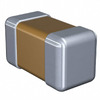 C0603X5R1A104M030BC
C0603X5R1A104M030BC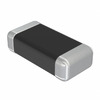 QMJ316BB7473KLHT
QMJ316BB7473KLHT TMK107B7224KAHT
TMK107B7224KAHT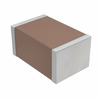 CGA4J3X8R2A333M125AB
CGA4J3X8R2A333M125AB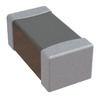 CQ0603CRNPO9BN6R8
CQ0603CRNPO9BN6R8 TWCB127K008CCYZ0000
TWCB127K008CCYZ0000 10117836-001LF
10117836-001LF QSE-020-01-L-D-A
QSE-020-01-L-D-A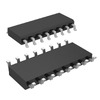 MAX3032EESE+
MAX3032EESE+ CS4299-JQZR
CS4299-JQZR
- MAX1874ETE+T
- SP3497EEN-L/TR
- MC33594FTAR2
- TM4C1233E6PZIR
- SN75C3232EPWR
- XC5VLX30-1FFG324I
- T491T156M006ZT
- TLV2252AIPW
- SSM3302ACPZ-RL
- T491B225K020AT4539
- UCC3972PW
- MC100E131FNG
- T491C226K010AT7280
- CB-1410CFB0
- CY7C425-65JCT
- ICS8745BYLFT
- LH28F512BFBD-PTSLZ4
- LT1529CQ-3.3
- LTC1871IMS#3CFPBF
- MC68HCP11AOCFN3R2
- MCM69F536CTQ10
- NCV33163DW
- P87C52UBBB
- PPC405EX-NPC400T
- STB80NF03L
- TSOP1838
- TZA3013BU/N3
- AUR6352GSR
- CMI-DCP5020NH-2R2M
- MT5301VCMU
- N32905R3DN
- TCS3BE0B0BCN
- PC87436M-VPG
- KMVNW000LM-B206
- M36COW6050TOZSP
- MT9V034C12STM
- VI-J50-EY/F4
- GF108-630-A1
- DAC70501ZDQ